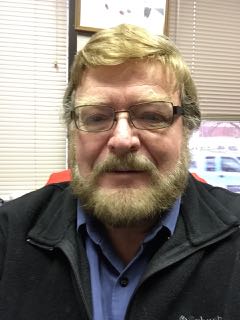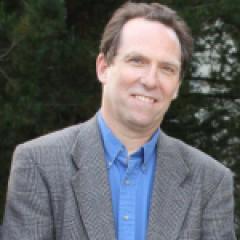Living in Dialogue: Doug Christensen on ESEA: Time for the Voices of Educators, Parents and Students to be Heard
I first heard of Doug Christensen back in 2008, when he was still serving as Commissioner of Education in Nebraska. He was forced to resign because the locally-based assessment system he had developed there did not meet the mandates of No Child Left Behind — as described in this interview here. I connected with Christensen again a couple of years later, and we discussed the importance of local initiative and self determination. This week, I caught up with him again, as he has been on Capitol Hill, sharing his views with lawmakers wrestling with the reauthorization of ESEA. Here is what he has to say.
1. What are you telling our representatives in Congress this week in regards to ESEA?
Doug Christensen: I support the notion that it is time for our federal government to reduce its “footprint” in the business of states. The constitution of each state clearly provides for and is responsible for the education of the youngest of each state’s people. It is not the role of the federal government. The role of federal government is to incentivize things like CTE, high poverty programs, safe and drug free schools and out-of-school learning centers.
Of course, this brings up the caveat so often cited that “if you are going to accept federal monies, you need to be accountable for it.” First, there is no such thing as “federal money.” The money with which the federal government has been entrusted belongs to the citizens and taxpayers in the states. Second, the federal government can not be a proxy for the citizens and taxpayers of any state. The accountability for the use of any public funding is back to the people who pay, i.e., local taxpayers. Federal accountability has too long displaced state and federal accountability. Third, of course states need to be accountable for their intentions in terms of what they will do with the monies received from federal grants and then be accountable for spending it for the purposes it is intended to serve. Beyond that, the accountability is back to the taxpayers of the state for the results in terms of student learning.
The best way for the federal government to reduce the footprint is to back up the testing requirement to grades 4-8-11 and let the states fill in the other grades with state or locally-determined assessment systems. As long as the requirement remains for every grade testing, there is no space for states and school districts to implement strategies designed to create more and better opportunities to learn for each child because that space is taken up by test prep, test taking and reporting. We can do better with our time and monies.
2 How has your experience in Nebraska shaped your perspective on standardized tests?
Doug Christensen: More than ever, I am convinced of the harm being done by standardized testing. All of the research confirms that standardized tests measure advantage and not learning. And, they measure content recall, not application or higher order learning skills. So much of the test prep time is reserved for going over and over content pieces so that students can recall them…….not learn them.
I am also convinced that if we do not bring assessment out of the curriculum and instruction of the classroom (rather than out of the standards), we will never really know what and how well students are learning. Assessment should never be an end of instruction. When it is, using the data is a “forensic” activity while assessment that is embedded in instruction is “anthropomorphic” and useful while instruction is going on. The classroom teacher is the person who is with the students as they are learning (anthropomorphic) and they need data but the kind that verifies their judgments about who is learning, what are they learning, who is not learning and what is it they are not learning. No standardized test can answer those questions, only teacher who spend their days with students are able to answer them.
3 What were some of the advantages you saw in the sort of locally designed assessments that were developed in Nebraska under your leadership?
Doug Christensen: There are so many but there are the two or three that were most important were (1) our teachers led the process and because of the professional development we invested in them, they were the most assessment literate educators in the world. Assessment literacy is a prerequisite to teaching to an outcome that is one of higher order learning levels. And, (2) they knew they were valued as professionals because of the time and money invested in their leadership. And, (3) the students learned and learned deeply. Many students became able to judge their own learning and because the assessments represented the curriculum they were taught, they could judge when they had mastered the material or when they needed to invest more to master it.
4. What has happened to this program in the past four years since you left?
Doug Christensen: As with any state test, the STARS systems was displaced for most schools. However, there are many schools that still use the basic principles of classroom- based assessment, they have moved to the state test as the outcome. There are also many teachers who continue to use what they learned about good assessment to improve their teaching and the student’s learning. We also still have maybe 25 schools out of 200+ that continue to do STARS and find out that it remains the best way to prepare for any kind of testing.
5 In our last interview, you said this: “Assessment and accountability must have their locus of action and policy at the local level and in the hands of educators and local policy leaders. Name a profession that is not in charge of their own metrics of success and the metrics of what is good practice? Lawyers are in charge of theirs. Medical doctors are in charge of theirs. So are accountants, nurses, bankers, and even morticians. Why aren’t educators? Why aren’t the local folks in charge and accountable?”
Doug Christensen: I don’t think we have ever asked our educators to step up and design how they would be accountable like we have in other professions. Everybody has been a student is a school of some kind which makes them think they know…..and other professions can’t say that in terms of the experience of the people who are governing them.
The testing system of accountability is too seductive and simple for policy makers removed from the schools and classrooms to put in place. The assumption that testing is the way to measure learning was never challenged by policy leaders and in many cases they did not want to hear the voice of teachers who have suffered long from being politically naïve. Now we know better. We have clear evidence of the stress and strain that external testing places on educators and children. Neither should be acceptable.
Do you see any options on the table in the current debate over ESEA that will allow for greater responsibility and autonomy for educators? Yes, 4-8-11 testing provides “space” for other options at other grades. And, there is space for “local assessment” which is already provided for in NCLB but not allowed under the current or previous Education Secretaries.
6 There are some who suggest that the problems associated with NCLB and Race to the Top will be solved if we have “fewer, better” high stakes tests. Do you see this as the answer?
Doug Christensen: No! There is no “test” that is created external from the place in which it will be implemented that can be embedded into instruction. And, as a result of being external, administered remote from the site of instruction and used on a large scale the tests will be nothing other than a mixture of content and some application. There is no way to create large scale assessments that will measure the kinds of learning that we all refer to as “higher order learning.” Using a test on a large scale and using it over and over again, will create test fatigue and test familiarity which as a result will mask true achievement of the students as not being an outcome of instruction but an outcome of familiarity. Measurement fatigue is rarely mentioned by testing companies and large scale testing proponents, but it is real.
Large scale testing can never be the result of what Ron Heifitz calls “adaptive work.” In contrast, we have turned testing into a technical issue and one in which we expect the market to provide a solution. There are no social issues, including those in education, that we should be solving in the market place. We can solve roofing, purchasing of bricks and buses and the like in the marketplace but not education. We should be solving this issue one teacher, one classroom and one school at a time.
Teachers must be the creators, the drivers and adapters of what we want to in terms of good schools, good practices in teaching, quality learning outcomes including assessment.
7 What do you think the role of the Federal government and federal funding ought to be in our local schools?
Doug Christensen: As I stated above, the role of the federal government is to give incentives for states to solve issues in which all states should have an interest, e.g, high poverty students, workforce development in Career and Technical Education, STEM, Safe and Drug Free Schools, and Before and After School Programs…and others. The federal government is good at writing checks and these can be the source of funding and energy behind states solving their own issues, leaving the accountability for outcomes at the local level meaning states and districts.
8. Are there any other things you would like to say to educators, parents and students concerned about these issues?
Doug Christensen: It is time for educators, parents and students to hold hands and stand up for what we are doing to our public education system, our classrooms, our profession and, of course, our students. Our schools are not test factories. Our schools are not laboratories to try out new policy mandates from afar. Our schools do not produce products, we are social institutions. Our products are not our students. Our students are not “things” to be measured and manipulated. Our profession is not a bunch of amateurs. It is time for our voices to unite and to be heard.
This blog post has been shared by permission from the author.
Readers wishing to comment on the content are encouraged to do so via the link to the original post.
Find the original post here:
The views expressed by the blogger are not necessarily those of NEPC.

